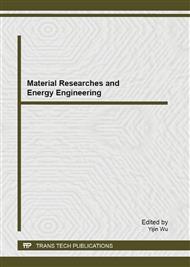p.646
p.653
p.658
p.664
p.673
p.681
p.688
p.693
p.699
Research a Suitable Textbook to Educate High-Level Employees of the Wind Energy Industry in Taiwan
Abstract:
This paper focuses on how to develop the wind power industry professional competence course, the use of the professional competence results of the aforementioned studies, construction of the wind power industry professional competence course module. The importance of the analysis found that students give the highest rating to Chapter 5, work attitude and ethics in the workplace, followed by Chapter 1 green beliefs and regulations, followed by Chapter 4, the future trends of wind power, Chapter 2 Principles of wind power, and Chapter 3 the wind power generation equipment and the establishment. The values of average important of 5 chapters are between 3.66 and 4.07, Less than 4.00, and the average percentage of correct answers (knowledge) of 5 chapters between 28% and 55%, Less than 60%. The IPA analysis found that all on the B quadrant. It is mean that the textbook of wind power is suitable for use and whether experts or students who believe that wind power education is important. Although wind power capacity is insufficient, the students believe that the importance of wind power technology is certainly, that is part of our textbooks to add.
Info:
Periodical:
Pages:
673-680
Citation:
Online since:
September 2013
Authors:
Keywords:
Price:
Сopyright:
© 2013 Trans Tech Publications Ltd. All Rights Reserved
Share:
Citation:


